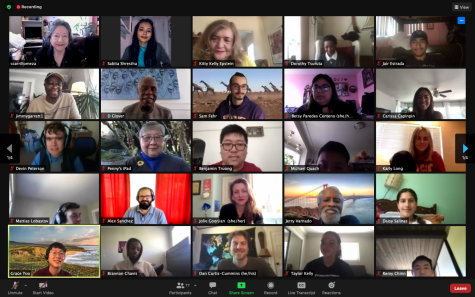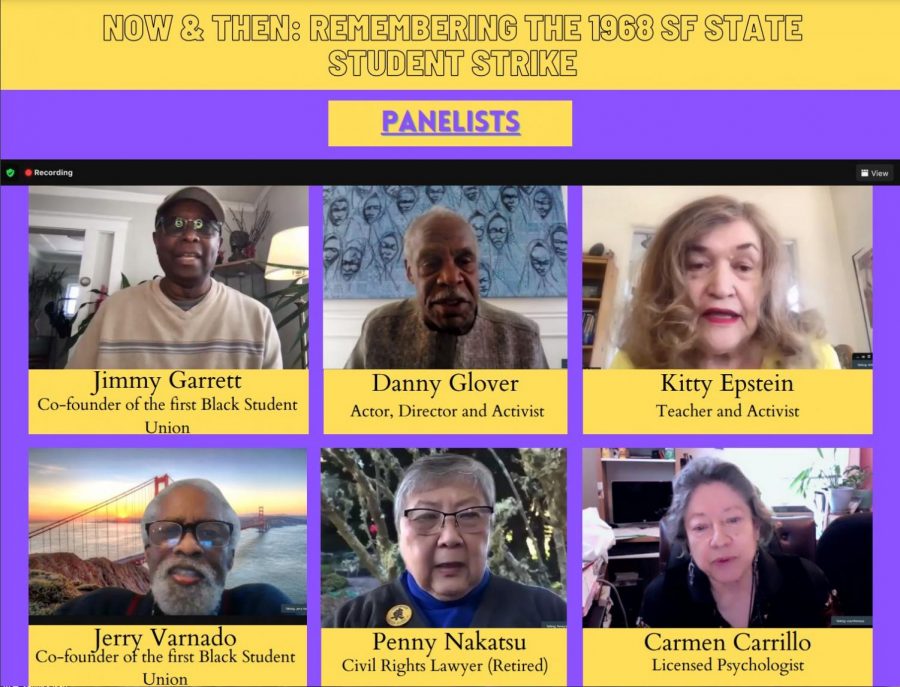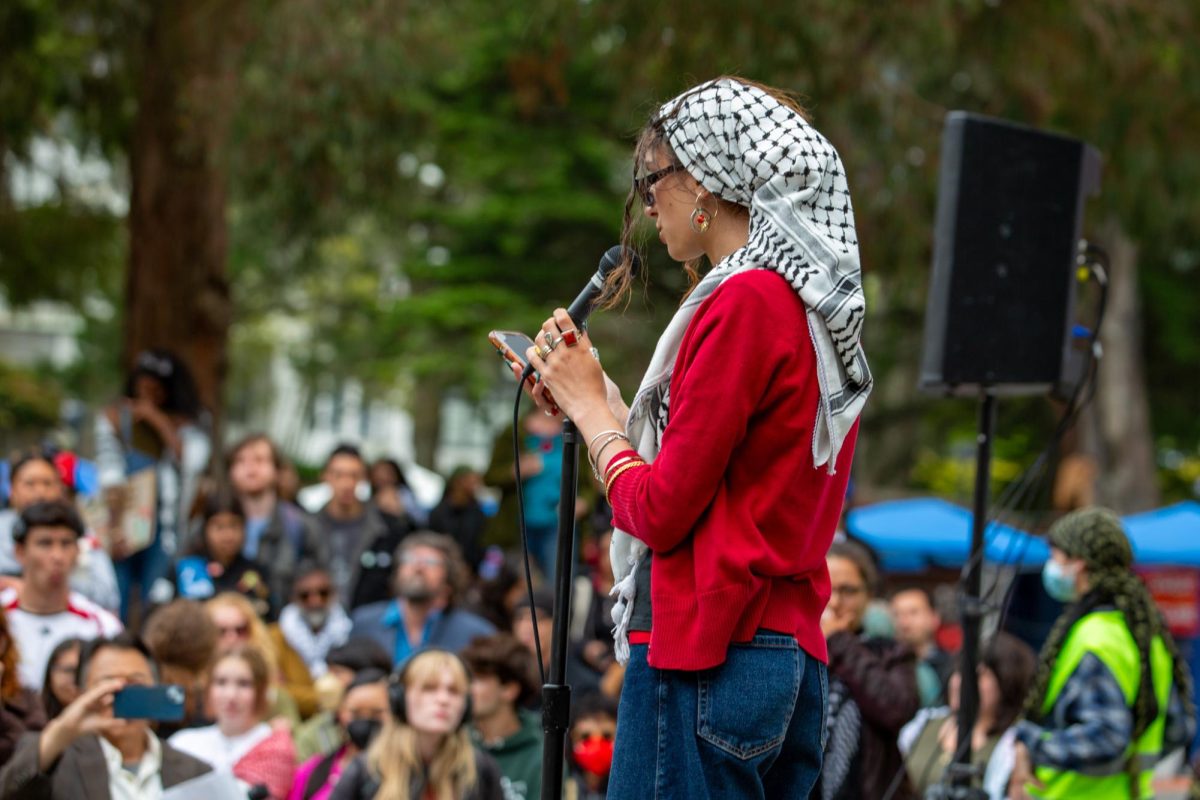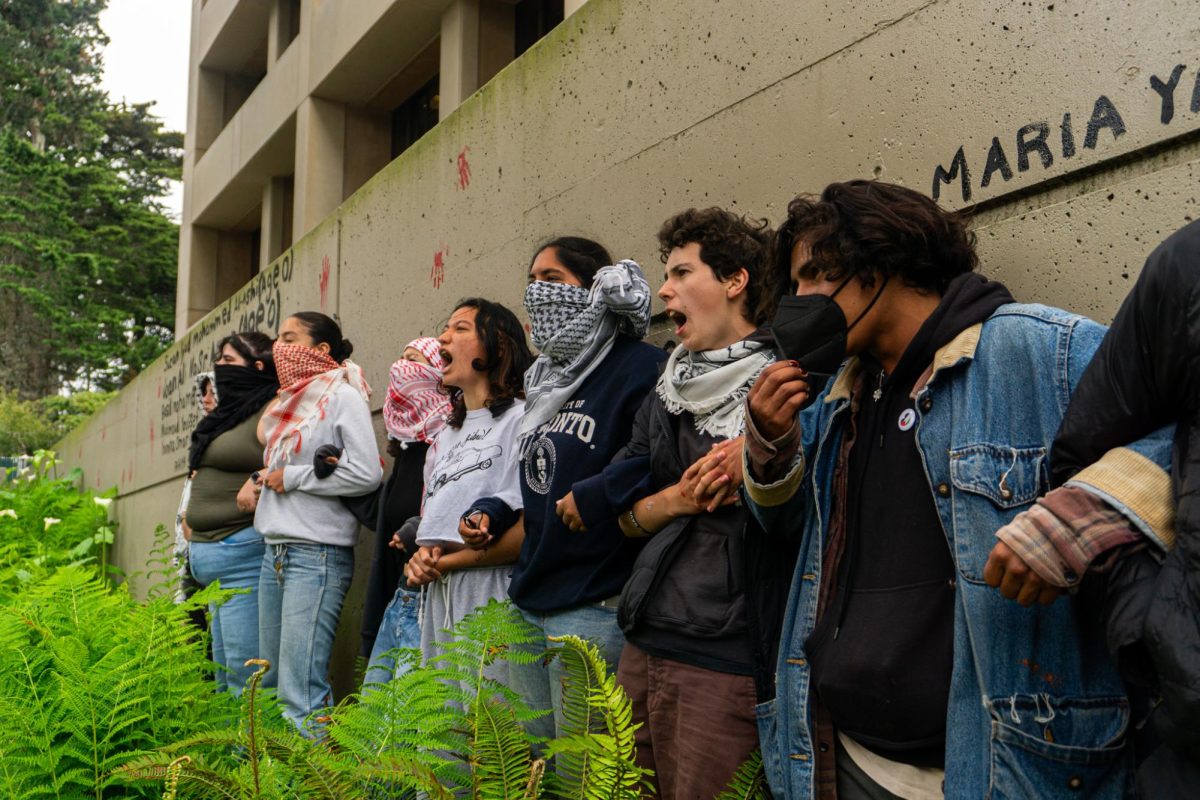On Monday, six activists from the 1968 SF State student strike shared their experiences and the role it played in shaping their lives in a virtual event called “Then & Now: Remembering the 1968 SF State Student Strike.” More than 70 participants attended the one-and-a-half-hour event.
The SF State Student Strike of 1968, led by the Black Student Union and Third World Liberation Front, remains the longest student strike in U.S. history, having lasted for five months from Nov. 6, 1968, to March 20, 1969. The strike notably led to the founding of the College of Ethnic Studies, the first-ever ethnic studies program in the country.
The event was co-sponsored by four of SF State’s student services organizations: First-Year Experience, Asian American & Pacific Islander Student Services, Black Unity Center and Studio 68.
Jimmy Garrett, one of the event panelists, was a co-founder of the Black Student Union Movement. In 1966, he enrolled at SF State with hopes to build a Black student movement from disparate student organizations, such as the Negro Student Association and Black graduate student organizations that already existed on campus. In December 1967, he was arrested and convicted for participating in a strike against the state Chancellor’s Office’s decision to block a “constitutionalized Black studies program” that was already adopted by the faculty and administrators. He said that he couldn’t participate in the rallies and protests due to the conviction, but through BSU he trained and organized people to build a community movement.
“My personal lesson was in a failure, mine was that I didn’t stay connected enough to the community on the campus partly because I was spending my time trying to replicate black student unions in various places around the western part of the United States,” Garrett said. But the lesson he learned from this failure was to never separate himself from the community that he organized, because his capacity and abilities were defined by that very community.

Danny Glover, actor, activist and one of the organizers of the student strike, said that it emerged from movements such as the civil rights movement and the anti-war movement.“That particular moment was a history that was made for not only students of various phases in various mass methods, using various methods, not only in San Francisco State but around the country as well. And in the world itself,” he said.
In the 1960s, the student movement not only arose in the U.S. but around the world — in Mexico, France, Italy, Japan and many other countries. Glover said that understanding what was happening with other countries and their communities played a crucial part in starting the strike. Many felt that the university was the perfect place as the initial platform to enforce the ethnic studies curriculum. This would be the beginning of a much larger project of representing and speaking on behalf of the community.
“That project was also always based in the community, in respect to communities that we came from,” Glover said.
Kitty Epstein, activist and professor in Oakland, was an enthusiastic picketer in the strike who showed up every day and went to rallies. As a white student, she said that the strike taught her valuable lessons about the role of white people in civil rights movements.
“Our solidarity mattered,” Epstein said. “But the experiences and the leadership of the working class men and women who led the strike was the source of the wisdom about what should happen, what should be done, what demands were important, and so on.”
Penny Nakatsu, who joined SF State in 1967, echoed Epstein, saying that the strike wouldn’t have succeeded without the “large numbers of unaffiliated students, including white students.” Nakatsu was the primary representative of the Asian American Political Alliance, which conjoined with four other student organizations to form the Third World Liberation Front.
The strike had a significant impact on Epstein’s involvement in other movements because it made her believe that she can make a difference. She is involved in activism to return full local control of the Oakland schools to Oakland residents. In 2003, the state took over Oakland schools due to a budget shortfall, suspending the power of local boards to the state-appointed superintendent. Over the years, state takeover resulted in staff layoffs and school closures.
Not only does she believe that the strike was the most important in U.S. history, the ripples of which reach contemporary movements like Black Lives Matter, and she encourages students to study the SF State student strike for themselves.
Carmen Carrillo, who grew up in the Mission District and was co-treasurer of the TWLF, had many reasons to get involved in the strike, but the driving force was her personal experience. She was fed up with seeing her friends from high school returning home from the Vietnam War in body bags, but also of racist profiling. Her mother was yelled at to “get out of here you dirty Mexican” by a white man when she was approaching an empty seat in a bus. Carrillo was told to go back to Cuba during a heated political discussion.
“We were very conscious of the fact that some of the values of the society which we aspired to like justice, freedom, freedom of speech, freedom of assembly,” Carrillo said. “These were all things that we loved, that we were aspiring to, but which in many cases were denied.”
For Nakatsu, coalition and allyship are the critical components of any social movement, including those that are ongoing.
“What injures any community is an injury to all,” Nakatsu said. “And each of us, individually, even though we may think we’re only one person, can find a way to try to make some impact in our sphere of influence, be it small or large.”
Even after a half-century, the ongoing fight for social justice, diversity and equality and the demands of the 1968 student strike are interconnected; the only difference being the accessibility of social media and the internet. Panelists, through their experiences of the strike, emphasized that any involvement, individual or in a group, can beget results, encouraging students and faculty to get involved.













Herbert Kenneth Chew • Feb 19, 2023 at 4:48 am
I still got an education in the 60’s at SFSC.